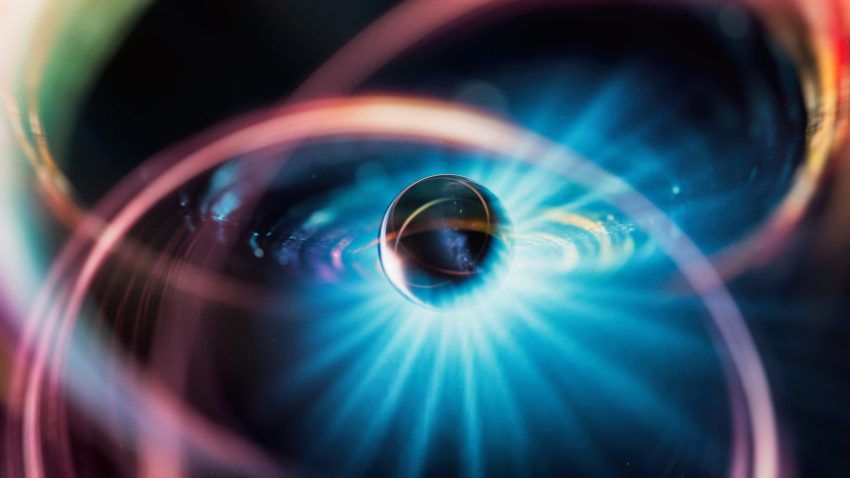Breaking the Diffraction Limit
Microscopes have long been essential tools for scientists, allowing them to explore the microscopic world and uncover details that are invisible to the naked eye. From observing cells to studying viruses and nanoscale structures, these instruments have played a crucial role in scientific discovery. However, even the most advanced optical microscopes have faced a fundamental challenge: the diffraction limit. This physical constraint prevents traditional optical microscopes from resolving objects smaller than about 200 nanometers, which is far too large to capture individual atoms.
This limitation has hindered researchers’ ability to study how light interacts with single atoms or molecules, an area critical for advancements in materials science, electronics, and quantum research. Now, a breakthrough in imaging technology has changed this landscape. A team of international researchers has developed a new technique called ULA-SNOM (ultralow tip oscillation amplitude scattering-type scanning near-field optical microscopy), capable of resolving features as small as one nanometer—small enough to observe individual atoms using light.
A New Era of Optical Imaging
The ULA-SNOM technique builds upon an existing method known as scattering-type scanning near-field optical microscopy (s-SNOM). In s-SNOM, a sharp metal tip is illuminated with a laser and scanned across a material’s surface. The scattered light reveals nanoscale details, but typical setups only achieve resolutions between 10 to 100 nanometers—still too large for atomic-scale imaging.
To overcome this, the researchers refined the technique by drastically reducing the movement of the scanning tip. In ULA-SNOM, the tip oscillates with an amplitude of just 0.5 to 1 nanometer, roughly the width of three atoms. This precise motion allows the tip to detect fine structural details without degrading the optical resolution. Any larger movement would reduce clarity, while smaller movements would introduce noise that overwhelms the signal.
The tip used in the experiment was made of polished silver and carefully shaped using a focused ion beam to ensure a smooth and stable surface. A red laser with a wavelength of 633 nanometers and six milliwatts of power was directed at the tip, creating a plasmonic cavity—a tiny, confined pocket of light formed between the tip and the sample surface. This cavity was squeezed into a volume of just one cubic nanometer, enabling it to interact with the material at the scale of single atoms.
Precision and Stability
To maintain the stability of this delicate setup, the entire experiment was conducted in ultrahigh vacuum and at an ultra-cold temperature of eight Kelvin (-265°C). These conditions eliminated vibrations and contamination, ensuring the tip remained precisely positioned just a nanometer above the surface. To enhance the clarity of the optical data, the team employed a specialized method called self-homodyne detection, which filtered out background light and improved the reliability of the signals.
Once the system was ready, the researchers tested it by imaging single-atom-thick silicon islands on a silver surface. Despite being only one atom tall, the microscope clearly showed where the silicon ended and the silver began, not just in terms of shape but also in how each material responded to light. This confirmed that the system could capture true optical contrast at atomic resolution.
Multifunctional Capabilities
What makes ULA-SNOM particularly unique is its ability to gather multiple types of information simultaneously. Alongside optical signals, the setup also measured electrical conductivity and mechanical forces using built-in scanning tunneling microscopy (STM) and atomic force microscopy capabilities. By analyzing how the tip responded at different vibration frequencies, the team was able to separate signals from various sources. The fourth harmonic, in particular, revealed the clearest differences in optical behavior between materials.
When compared to traditional STM, which is commonly used to image surfaces at the atomic scale, the optical images from ULA-SNOM matched its detail, achieving a resolution of about one nanometer—nearly identical to the 0.9-nanometer resolution of STM. For the first time, researchers could observe how a single atom or defect affects the optical behavior of a material. This development has the potential to revolutionize the design of nanostructures in electronics, the discovery of new photonic materials, and the creation of more efficient solar cells.
Additionally, the technique could be used to study quantum dots, single-molecule sensors, or biological structures with unprecedented detail. However, ULA-SNOM requires cryogenic cooling, ultrahigh vacuum, and specialized equipment, making it currently available only in advanced laboratories. Future studies may focus on making the approach more practical, accessible, and scalable.
